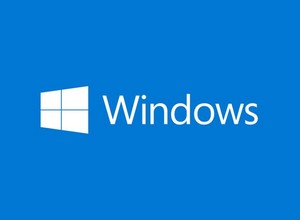 [German]There are reports that the cumulative security update KB5063878 released on August 12, 2025 for Windows 11 24H2 causes serious SSD problems. When transferring large amounts of data, errors are said to occur reproducibly when saving to certain SSDs with certain controllers. This can lead to data loss.
[German]There are reports that the cumulative security update KB5063878 released on August 12, 2025 for Windows 11 24H2 causes serious SSD problems. When transferring large amounts of data, errors are said to occur reproducibly when saving to certain SSDs with certain controllers. This can lead to data loss.
Windows 11 24H2 Update KB5063878 (August 12, 2025)
Cumulative update KB5063878 for Windows 11 24H2 from August 12, 2025 includes quality improvements and security patches (I reported on this in the article Patchday: Windows 10/11 Updates (August 12, 2025)). Microsoft lists some details about fixes in the support article.
In addition, several AI components were rolled out with the update. Further details can be found in the support article and in last month's preview update (see Windows 10/11: Preview Updates July 22, 2025).
Reports of SSD problems
I came across this topic late on Sunday at neowin.net, where colleagues referred to this tweet from a Japanese person with the X alias @Necoru_cat. This person is apparently an IT professional who builds his own PCs, mostly based on AMD, and describes himself as a "stray cat," as he writes about himself.

Since most blog readers are not very proficient in Japanese, I have included a screenshot of another tweet above. The Japanese user's message can be summarized in a few points:
Stay away from the KB5063878 update (the user specifies the date August 15, 2025) if you are running Windows 11 24H2 with SSDs. The user has encountered serious problems with the combination of SSD, Windows 11 24H2, and the KB5063878 update.
- The error pattern: SSD drives are no longer recognizable for Windows 11 24H2 (the S.M.A.R.T. values can no longer be read).
- Although it is sometimes possible to access the buffered directory structure of the medium, the associated files cannot be read.
The problem occurs in Windows 11 24H2 when writing large amounts of data to certain SSD storage devices. In tests conducted by the user, the problem occurs with SSDs with a utilization rate of over 60% after approximately 50 GB of continuous write data transfer. Similar problems have also been reported with HDDs, the user notes.
According to user tests, Phison's NAND controllers are more prone to these malfunctions. Among these controllers, models without DRAM are more susceptible to malfunction at lower write volumes. A list of potentially affected SSD models can be found in this tweet. If the problem occurs, there is a high risk of file corruption. The user suspects a problem with the drive cache, triggered by the August 2025 security update.
Blog reader Thomas S. left this German comment (thanks) , which brought me to the wccftech.com article Many SSDs Are Becoming Non-Functional After Large Data Writes with some more details. At present, however, I cannot estimate how widespread the problem is – but I would not roll out the August 2025 update to Windows 11 24H2 in managed environments (WSUS, etc.).
Similar articles:
Microsoft Security Update Summary (August 12, 2025)
Patchday: Windows 10/11 Updates (August 12, 2025)
Patchday: Windows Server Updates (August 12, 2025)
Patchday: Microsoft Office Updates (August 12, 2025)
Windows 11 24H2: Update KB5063878 causes installation error 0x80240069
Windows 11 24H2: KIR fix for WSUS installation error 0x80240069 with update KB5063878
Windows 11 24H2: Update KB5063878 as a re-release for WSUS (August 14, 2025)




I have a dual boot system , ubuntu and win 11, after update last few days win 11 is crashing reguraly. After crash everytime it is breaking ubuntu grub resulting both os inaccessible. Dump crash analysis pointing out to everything else but not actual culprit. Critical process died due to some drivers. unistalled all the drivers from manufacturer, showng antivirus hookups on critical processes so uninstalled the antivirus for testing but no luck. Finally in some dumps there was page file error. Probrably this time in this update MS has messed up with disk drive drivers which is randomly destroying grub and windows boot records as well.
I don't recomment dual boot systems anymore (I used that in 1997). Since Windows 8 and fast boot, it's a mess – and with Win11 it became a night mare. I have a dedicated Notebook with Linux Mint, a notebook with Windows 11 22H2 and an Windows 10 2019 Enterprise LTSC desktop for blogging, to avoid all the stupid things, Microsoft is pushing to Windows 11 users.
Oh, and I can use hypervisors, to run virtualized Win 11 installs for tests. It's now some kind of race condition: What ends sooner, the end of Windows 10 LTSC support or my blogging activities (I'm now 70, and I'm not sure, whether I'm able to blog till 2031).